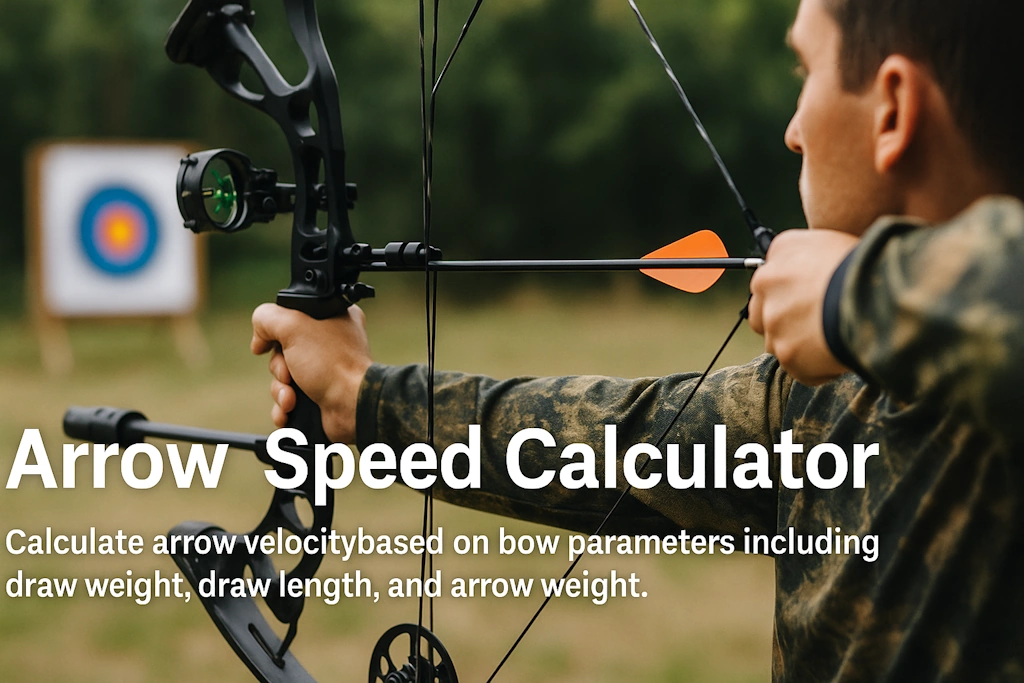Arrow Speed Calculator
Calculate arrow velocity based on bow parameters including draw weight, draw length, and arrow weight. Supports both metric (m/s) and imperial (fps) units.

You might also like
Related calculators you may find useful
Velocity Calculator
Calculate motion characteristics and speed vectors. Analyze velocity components, determine acceleration rates, and solve kinematics problems.
Energy Converter
Convert between all major energy units including joules, calories, kilowatt-hours, and BTUs. Features specialized conversions for physics, engineering, and daily use.
Momentum Calculator
Calculate linear and angular momentum in physics. Analyze collisions, conservation of momentum, and understand impulse-momentum relationships.
Force Calculator
Calculate force using mass and acceleration. Analyze Newton laws of motion, gravitational force, and convert between different force measurement units.
More Physics calculators
Explore fundamental physics concepts with calculations for mechanics, thermodynamics, electricity, and waves. Analyze motion, energy transformations, and particle interactions in various scenarios.
Interested in Advertising?
Tell us more, and we'll get back to you.
Contact Us